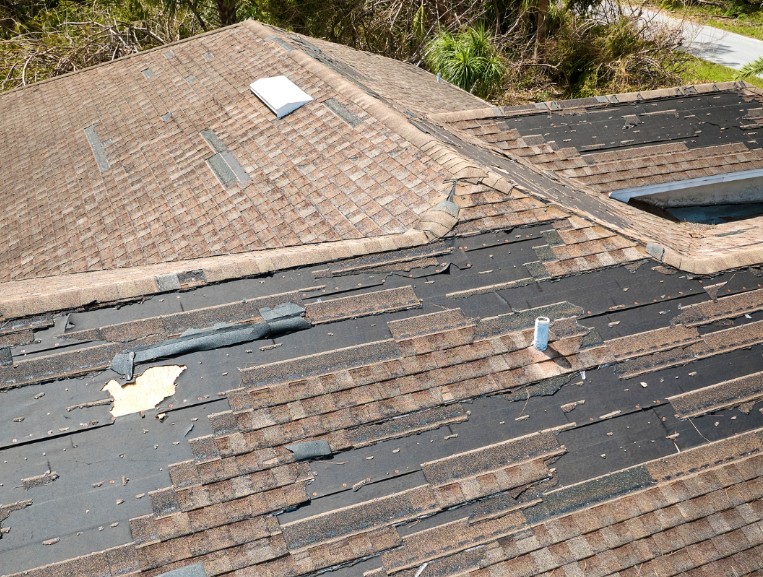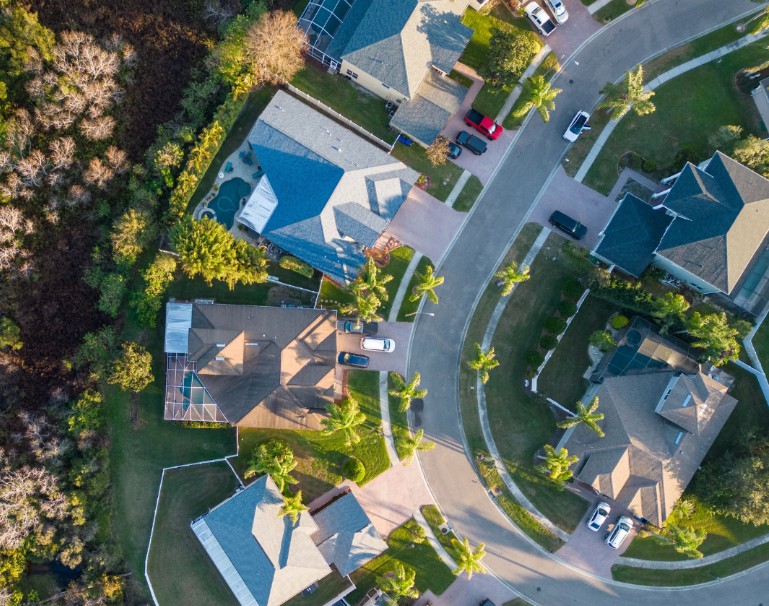Florida is known for its warm weather and beautiful beaches, but the climate also brings extreme weather conditions that can be tough on roofs. The state's geographical location subjects it to a subtropical climate, characterized by high humidity and significant rainfall throughout the year. This combination of factors can lead to a range of issues, from thermal expansion and contraction to moisture infiltration and mold growth. Here's how different weather elements impact roofing in Florida:
Sun Exposure
The Florida sun is relentless, and prolonged exposure to UV rays can degrade roofing materials over time. This is particularly true for asphalt shingles, which may become brittle and lose their protective granules. These granules are essential as they help protect the shingles from UV damage and add an extra layer of fire resistance. Over time, the loss of granules can lead to accelerated aging and a decrease in the roof's overall lifespan.
Rain and Humidity
Frequent rain and high humidity can lead to moisture damage, mold, and mildew. Roofs need to be well-ventilated to prevent moisture from becoming trapped, which can lead to rot and other structural issues. The consistent presence of moisture can also compromise the integrity of the roofing underlayment and lead to leaks.
In Florida, the combination of rain and humidity can exacerbate issues such as algae growth, which not only looks unsightly but can further erode roofing materials if left unchecked. It's crucial to ensure that your roof has proper ventilation and drainage to mitigate these risks.
Hurricanes and Wind
Hurricane season is a major concern for Florida homeowners. High winds can lift shingles, while flying debris can cause physical damage to the roof's surface. This makes regular inspections crucial for maintaining roof integrity.

Moreover, the pressure changes during a hurricane can create a vacuum effect, pulling materials away from the roof structure. Investing in impact-resistant materials and reinforcing roof edges can help minimize potential damage.
Homeowners should also consider storm-proofing measures, such as installing hurricane straps and ensuring that roof fasteners are securely in place to withstand the powerful forces of nature.
Roof Replacement Frequency in Florida
The frequency of roof replacement in Florida depends on several factors, including the type of roofing material, the quality of installation, and the level of maintenance. The state's climate can significantly influence how long a roof lasts, necessitating a tailored approach to roof care and replacement. Here are general guidelines for different types of roofing materials:
Asphalt Shingles
Asphalt shingles are a popular choice for residential roofing due to their affordability and ease of installation. In Florida's climate, asphalt shingles typically last 15 to 20 years. However, if they are regularly exposed to harsh weather conditions, their lifespan may be shorter.
To prolong their life, homeowners can invest in high-quality shingles with enhanced UV protection and ensure proper installation by a certified contractor. Regular maintenance, such as cleaning debris and ensuring proper attic ventilation, can also help extend the life of asphalt shingles.
Metal Roofing
Metal roofs are more durable and can withstand harsh weather better than asphalt shingles. They generally last between 40 to 70 years. Their reflective properties also make them energy-efficient, which is a bonus in Florida's hot climate. Metal roofing can reflect the sun's rays, reducing cooling costs and providing a sustainable roofing option.
Tile Roofing
Tile roofing, often made from concrete or clay, is another common choice in Florida. These roofs can last 25 to 50 years or more, provided they are well-maintained. Tiles are heavy and require a strong support structure, but they are resistant to fire and insect damage. The aesthetic appeal of tile roofing, combined with its durability, makes it a preferred choice for many Floridians.
However, it's essential to regularly inspect tiles for cracks or displacement, especially after storms, to prevent water infiltration and maintain the roof's longevity.
Flat Roofing
Flat roofs are common in commercial properties but are also used in some residential settings. They usually last 10 to 20 years. It's essential to ensure proper drainage on flat roofs to prevent water pooling and leaks. Due to their low slope, flat roofs are more susceptible to water accumulation, which can lead to significant issues if not addressed. Regular inspections and maintenance, such as clearing debris from drainage systems, can help extend the life of a flat roof.
Signs That Your Roof Needs Replacement
Even if your roof is within its expected lifespan, it's important to watch for signs that it might need replacement sooner. Early detection of potential issues can save homeowners from costly repairs and damage. Here are some indicators:
Visible Damage
Look for cracked, curled, or missing shingles. For tile roofs, check for broken or missing tiles. Visible damage is a clear sign that your roof may need attention. It's also essential to inspect flashing around chimneys and vents for signs of wear, as these areas are prone to leaks.
Regularly checking your roof, especially after a storm, can help identify and address damage promptly.
Leaks and Water Damage
Water stains on ceilings or walls can indicate a leaking roof. If left unaddressed, leaks can lead to more significant structural damage. It's crucial to address leaks immediately to prevent mold growth and further deterioration of your home's interior. Consider using moisture detectors to catch hidden leaks early and ensure your attic is well-ventilated to prevent moisture buildup.

Sagging Roof
A sagging roof can be a sign of structural issues, possibly from water damage or poor construction. This requires immediate attention from a professional roofing contractor. Structural sagging can compromise the entire stability of your home, so it's important to address the root cause quickly. Reinforcing the roof's support system or replacing compromised sections can prevent a total roof collapse.
Increased Energy Bills
If you notice a sudden spike in your energy bills, it could be from poor insulation from an aging roof. A new roof can improve energy efficiency by providing better insulation. Upgrading to energy-efficient roofing materials can significantly reduce heating and cooling costs. Consider conducting an energy audit to identify other areas of your home that may contribute to high energy usage and implement comprehensive solutions.
Working with Roofing Contractors in Florida
When considering a roof replacement, it's crucial to work with a reputable roofing company. Choosing the right contractor can make a significant difference in the quality and longevity of your new roof. Here are some tips for choosing the right contractor:
Check Credentials
Ensure the contractor is licensed and insured. This protects you from liability in case of accidents during the roofing process. A licensed contractor is also more likely to adhere to local building codes and regulations, ensuring your roof meets safety standards. Don't hesitate to ask for proof of insurance and verify the contractor's license with the relevant authorities.
Get Multiple Quotes
Obtain quotes from several roofing companies to compare pricing and services. This will help you make an informed decision based on your budget and needs. Be cautious of quotes that are significantly lower than others, as they may indicate subpar materials or workmanship. A detailed quote should include all aspects of the job, from materials to labor costs, allowing you to make a comprehensive comparison.
Ask for References
Request references from past clients to gauge the contractor's reliability and quality of work. Positive testimonials and reviews are good indicators of a trustworthy contractor. Reach out to references to ask about their experience, the contractor's communication, and the timeliness of the project completion. Online reviews can also provide additional insights into the contractor's reputation.
Inspect the Contract
Before signing, carefully review the contract to ensure it covers all aspects of the job, including materials, timeline, and warranty details. A well-drafted contract should also include payment terms and a clause for handling unforeseen issues. Understanding the terms and ensuring they align with your expectations can prevent disputes and ensure a smooth roofing project.
Conclusion
In Florida's challenging climate, understanding when to replace your roof is essential for protecting your home. The unique environmental conditions require homeowners to be proactive about roof care and replacement.
By considering the type of roofing material, paying attention to signs of wear, and working with qualified roofing contractors like us at Mighty Dog Roofing in Fort Myers, you can ensure that your roof provides reliable protection for years.
Give our team a call today!


